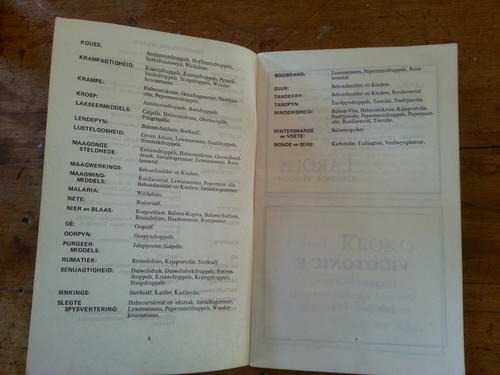Lennon Dutch Medicines Handbook Of Chemistry

Take 2 big gulps or 2 large tablespoonfuls at a time. 3 Mix 1 bottle Lennon “Witdulsies”, a quarter bottle Lennon “Borsdruppels”, 2 teaspoons Lennon Paragorie, 1 bottle linseed oil, 1 bottle Turlington, 1 tablespoon, 500g Honey and Peppermint drops to taste. Protokoli soveschanij pri zaveduyuschej dou. 4 Mix 2 small bottles Lennon “Borsdruppels”, 125ml fresh lemon juice and half a bottle of honey.
Now, you can access this prestigious series from your desktop with the convenience and flexibility of Online Books. Canon ir 2016 download standby canon. The Methods and Principles in Medicinal Chemistry online book series consists of the first 50 volumes published within the series. From the very beginning, the series has focused on topical volumes covering hot concepts and technologies, and readers will not miss any important topic in the field. The range of topics is as diverse as are the challenges facing modern drug developers, spanning the fields of organic chemistry, pharmacology, toxicology, life science, and analytics, the latter also including bioinformatics, chemoinformatics and proteomics. Below, you'll find a list of titles in the series that are only available online.
From this page you can also.
Herb: Dutch Rush Latin name: Equisetum hyemale Family: Equisetaceae (Horsetail Family) Medicinal use of Dutch Rush: Horsetails have an unusual chemistry compared to most other plants. They are rich in silica, contain several alkaloids (including nicotine) and various minerals. The plant is anticancer, anti-inflammatory, antispasmodic, diaphoretic, diuretic, expectorant, febrifuge, haemostatic, hypotensive and styptic. It also has an appetite-stimulating effect.
The barren stems are used, they are most active when fresh but can also be dried and sometimes the ashes of the pant are used. The plant is a useful diuretic when taken internally and is used in the treatment of kidney and bladder problems. A decoction applied externally will stop the bleeding of wounds and promote healing. The plant contains polyphenolic flavonoids with bactericidal activity. Description of the plant.
Height: 100 cm (3 1/ 4 foot) Habitat of the herb: Shady streambanks etc, to 500 metres. Edible parts of Dutch Rush: Strobil (the fertile shoots in spring) - cooked. An asparagus substitute. Caution is advised, see the notes above on toxicity. Roots - dried and then cooked.
A source of starch. Caution is advised, see the notes above on toxicity.
A further report says that the peeled stems, base of the plant, root and tubers were eaten raw by the N. American Indians, the report went on to say that this may be inadvisable. Other uses of the herb: The stems are very rich in silica. They are used for scouring and polishing metal and as a fine sandpaper.
The stems are first bleached by repeated wetting and drying in the sun. They can also be used as a polish for wooden floors and furniture. The infused stem is an effective fungicide against mildew, mint rust and blackspot on roses. It also makes a good liquid feed. Used as a hair rinse it can eliminate fleas, lice and mites. A light pink dye is obtained from the stem. The hollow stems have been used as whistles.